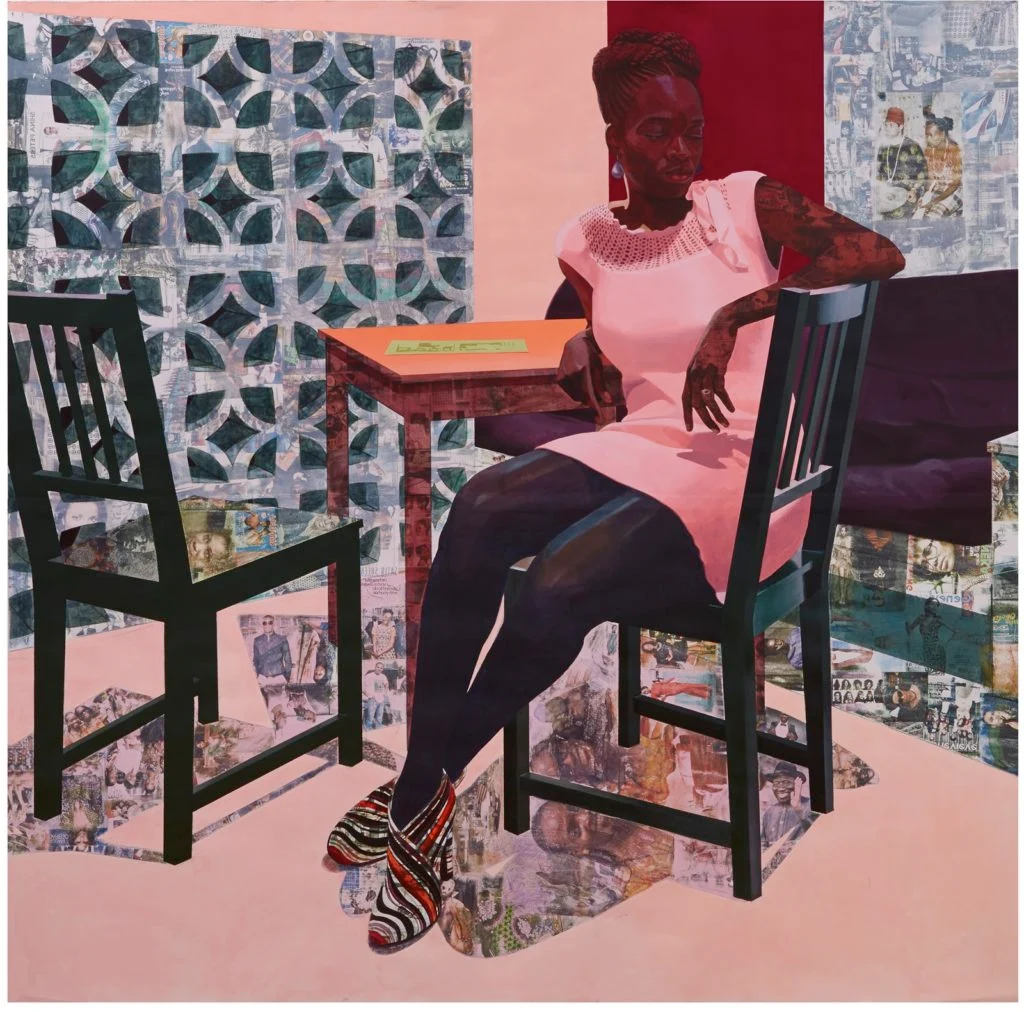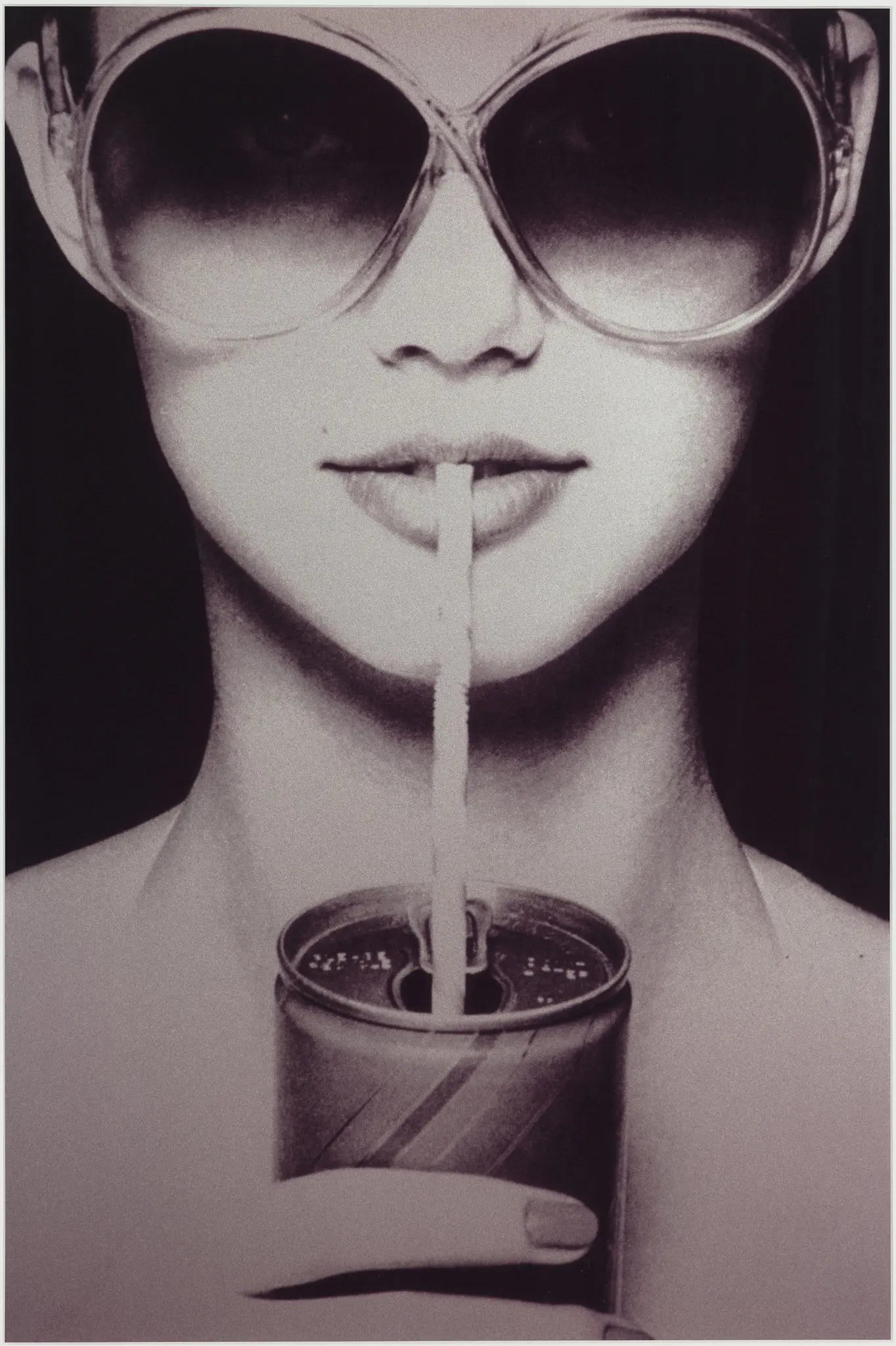
Mickalene Thomas, Maya #7, 2015, Courtesy Mickalene Thomas & Galerie Nathalie Obadia Paris/Bruxelles. Copyright: Mickalene Thomas Studio
“Fashion fades, style is eternal.” Yves Saint Laurent’s iconic words transcend the runway, echoing just as profoundly in the art world.
While fashion and art might seem like distant cousins, they’re more entwined than we often give them credit for. Fashion is all about the here and now—bold, brash, and accessible. Art, on the other hand, is the haute couture of culture—exclusive, elite, and endlessly enigmatic. Fashion flirts with the transient, its trends as fleeting as a season’s must-have bag. Art, however, is the epitome of longevity, cherished as an investment that appreciates with time. Yet, despite their differences, the ways in which these two worlds operate reveal striking similarities.

Njideka Akunyiji Crosby, I Refuse to be Invisible, 2010

Njideka Akunyili Crosby, Predecessors, detail (2013). Courtesy of the artist and Tate.
Fashion’s cyclical nature is its calling card—what’s old is new again, with every current look a reincarnation of styles from the 1950s onward. The art world spins a similar tale. While the masters remain forever in vogue, the spotlight shifts as emerging artists bring fresh takes on figurative painting—think surrealist distortions and portraits by Black and minority artists delving into identity and self. Today’s collectors are captivated, but just like a coveted designer piece, the trend’s allure may fade. Take Process Art, once the darling of the art scene, now overshadowed, but poised for a comeback as abstract painting enjoys a renaissance.

Emily Mae Smith, Broom Life, 2014
Navigating trends with finesse—whether in fashion or art—demands a discerning eye. It’s akin to investing in timeless couture rather than the flash-in-the-pan designs of the season. True style aficionados, be they in fashion or art, understand the value of looking back. Just as a fashion connoisseur with an encyclopaedic knowledge of past styles can distinguish between a fleeting trend and a future classic, art collectors rely on a deep understanding of art history to make their bets on what will endure.

Richard Prince, Fashion
Diversity is the buzzword du jour, but it’s more than just a trend—it’s a revolution that’s reshaping both fashion and art. In the past few years, fashion brands helmed by and celebrating Black, minority, and marginalised communities have stormed the global stage. From South American designers like Johanna Ortiz, Gabriela Hearst, and Silvia Tcherassi capturing international attention, to powerhouse brands like LOEWE uplifting folk artisans through their foundations, fashion is finally reflecting the world in all its diversity.

LOEWE Weaves Collection, 2021
Art is experiencing a parallel shift. The global Black Lives Matter movement didn’t just shake the fashion industry; it rippled through the art world, prompting a reevaluation of who gets the spotlight. Suddenly, collectors are clamoring for works by Black, ethnic minority, and female artists, making diversity not just a moral imperative but a smart collecting strategy. The art market is catching up to what fashion has begun to champion—representation matters, and it’s changing the game.
Image
Mickalene Thomas, Moment’s Pleasure # 2, 2008
Come With Me, Now I Need You
For far too long, women artists have been relegated to the shadows, their contributions undervalued and overlooked. Key figures like Lee Krasner and Elaine de Kooning were once hidden behind the larger-than-life profiles of their husbands, Jackson Pollock and Willem de Kooning. But the tides are turning. The art world is finally uncovering the brilliance of historical women artists, and a new generation is stepping into the spotlight, making their voices impossible to ignore. This surge in interest can also be linked to the rise of powerful female collectors, who find themselves drawn to art that explores identity, fertility, and gender—themes that resonate deeply.
Image
Helen Frankenthaler, In Living Color
In fashion, KOLs (Key Opinion Leaders) wield tremendous influence, setting trends and driving sales. The art world has its own tastemakers, but here, the power players are often major collectors. These insiders, some with private art institutions of their own, can single-handedly elevate an artist’s career, much like a fashion blogger can propel a brand to stardom. But while fashion KOLs thrive on public adoration, art KOLs operate within a more insular, elite circle, where influence is as much about connections as it is about taste.

IN LIVING COLOR
Helen Frankenthaler with ‘Summer Banner’ (hanging),
‘Spices’ (in her hands) and ‘Summer Core’ (foreground),
photographed by Alexander Liberman
at her Provincetown studio in 1968.
In a world where global travel is once again possible, and the internet has democratised access to information, the once-insular circles of art and fashion are opening up. Yet, even as these worlds become more interconnected, they maintain their distinct hierarchies. The art world, much like fashion, is a small, tight-knit network where galleries, institutions, collectors, and socialites all play their parts. Despite its exclusivity, art has a unique power to transcend social and economic boundaries, creating connections across diverse groups. The true magic happens when art crosses over, collaborating with fashion, technology, food, and property to create something entirely new.

Richard Prince and Louis Vuitton

A Yayoi Kusama waxwork, complete with Vuitton handbag
In this rarefied world, despite the sophisticated tastes of some collectors, many still follow the herd, opting for safe bets and market favourites. A telling insight from The Price of Everything, a film about the art market, reveals that when you step into the homes of top collectors, their collections often look remarkably similar. It’s a bit like fashion, where the pursuit of beauty can lead to a sea of sameness. But in both worlds, it’s the individuals with a strong personal identity who truly stand out, becoming the irreplaceable icons of style.

For the documentary The Price of Everything, producers and art world insiders Debi Wisch and Jennifer Stockman, pictured here in Marilyn Minter’s studio, used their intimate knowledge to trace the changes in the art market.
Portrait by Zack Garlitos.
The notion that “pretty is boring” is a sentiment shared by both fashion and art insiders. Pure beauty, while pleasing, can be dull—edginess and boldness catch the eye and hold it. Those with refined taste often eschew traditional notions of beauty in favor of something more unique. In the art world, this means that collectors often gravitate toward works that challenge the viewer, even if they’re uncomfortable or “ugly.” It’s the pieces with depth and meaning that resonate most, while purely decorative art is often dismissed as superficial.
In both fashion and art, the key to timeless style is originality. Playing it safe might keep you in the game, but only those who dare to be different will leave a lasting mark. Because in the end, a fad fades faster than you can say “Yves Saint Laurent.”
-the end-
Text: Luning
Copyediting: Rosie
This article was originally published in my Taste column on Artnet.


